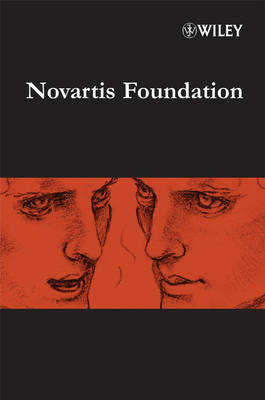
Novartis Foundation Symposium 222 – Homology
Wiley-Blackwell (Hersteller)
978-0-470-51565-5 (ISBN)
- Keine Verlagsinformationen verfügbar
- Artikel merken
'Homology' as a concept became increasingly elusive during the course of the 20th century. The central debates and controversies concern both fundamental definitions and the nature of the criteria by which homology is judged. Attempts to move away from comparative morphology to ideas based on developmental pathways have tended to founder on the fact that developmental pathways evolve and that similar cells or tissues or structures in animals will often have different developmental origins. The use of information about conserved molecules in seemingly conserved developmental processes has also proven controversial. In molecular biology, the use of the term 'homology' has given rise to more debate, although here the issue seems to involve primarily the criteria for assessing whether parts of genes are the same because of shared descent or for other reasons. The contributions to the book explore these topics systematically. There are chapters on the historical development of the concept of homology and its use in population studies.
Other chapters deal with issues of homology in morphological and developmental studies, in behavioural studies, and especially in studies at the level of molecular genetics.
The Novartis Foundation is an international scientific and educational charity which promotes the study and general knowledge of science and in particular encourages international co-operation in scientific research.
Homology-History of a Concept (A. Panchen). Homoplasy, Homology and the Problem of 'Sameness' in Biology (D. Wake). Homology Among Divergent Paleozoic Tetrapod Clades (R. Carroll). Generation, Integration, Autonomy: Three Steps in the Evolution of Homology (G. Muller & S. Newman). On the Homology of Structures and Hox Genes: The Vertebral Column (F. Galis). Developmental Basis of Limb Homology in Urodeles: Heterochronic Evidence from the Primitive Hynobiid Family (J. Hinchliffe & E. Vorobyeva). Larval Homologies and Radical Evolutionary Changes in Early Development (R. Raff). A Research Programme for Testing the Biological Homology Concept (G. Wagner). Homology and Homoplasy: The Retention of Genetic Programmes (A. Meyer). Homology in the Nervous System: Of Characters, Embryology and Levels of Analysis (G. Striedter). Natural History and Behavioural Homology (H. Greene). Evolutionary Dissociations Between Homologous Genes and Homologous Structures (G. Wray). Establishing Homology Criteria for Regulatory Gene Networks: Prospects and Challenges (E. Abouheif). The Effect of Gene Duplication on Homology (P. Holland). Summary (B. Hall). Indexes.
| Erscheint lt. Verlag | 28.9.2007 |
|---|---|
| Verlagsort | Hoboken |
| Sprache | englisch |
| Maße | 157 x 235 mm |
| Gewicht | 550 g |
| Themenwelt | Naturwissenschaften ► Biologie |
| ISBN-10 | 0-470-51565-1 / 0470515651 |
| ISBN-13 | 978-0-470-51565-5 / 9780470515655 |
| Zustand | Neuware |
| Haben Sie eine Frage zum Produkt? |